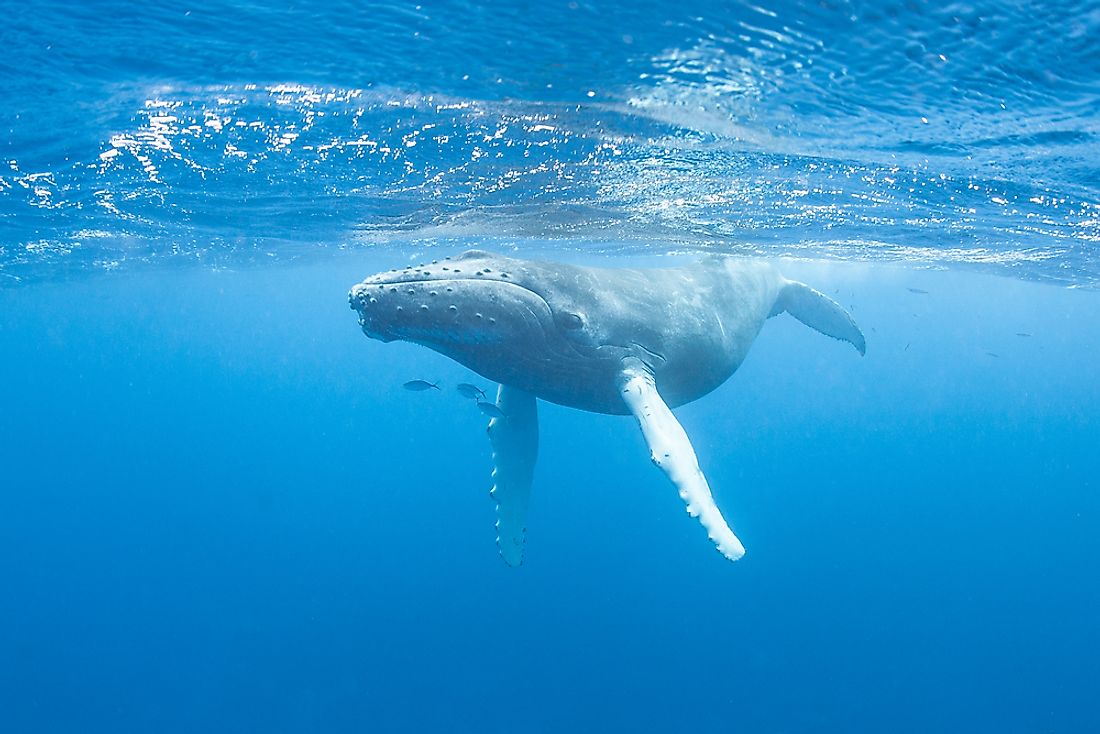Humpback Whale Facts: Animals of the Oceans

The humpback whale is arguably the most loved and famous of all the whales, and is known for its distinct ability to sing for long periods of time. One of the key features used to differentiate one humpback whale from another is their unique dorsal fin and fluke which are scientifically proven to be as distinct as the fingerprints in humans.
Physical Description
The humpback whale can be either black or grey in their upper area and white on their lower side. These types of whales have long pectoral fins measuring up to one-third the length of their whole body with 20-50 white ventral grooves located on their throat. The flukes of this type of whales can be as wide as 18ft. The female humpback whale is typically larger compared to the male. Viewed from above, the head of this type of whale appears a bit broad with a slim profile. Adult males measure 40-48 feet compared to the females who measure 45-50 feet.
Behavior
Humpback whales are active and acrobatic animals capable of jumping out of water and performing maneuvers. The whales also maneuver comfortably while facing upwards. These movements are important because they use them to communicate with each other. One of the unique behaviors of the humpback whales is their singing habit done only by the male whales. Each song can last up to 30 minutes and repeated continuously for hours. Different humpback whale populations tend to sing uniquely compared to other humpback whale populations.
Habitat and Range
Humpback whales inhabit all major oceans of the world. Just like most of the whales in the diverse oceans of the world, the humpback whale has the habit of migrating between their feeding areas and breeding areas, with a typically annual migration of up to 16,000 miles. Although whale populations are known to not cross the equatorial line, some have been reported to do so. For example, in Panama and Costa Rica, humpback whale populations from both the Southern Hemisphere and the Northern Hemisphere have been recorded.
Diet
Each humpback whale feeds on close to a ton of food daily. Some of the foods this whale enjoys are small shrimps, krill, and different types of fish. While feeding, large water volumes together with food are usually consumed by the whale. By using its grooves located on its throat, the excess water is filtered, and the remaining food is swallowed for digestion.
Reproduction
Humpback whales reach sexual maturity at the age of between 6 and 10 years of age. The mature females usually bear one calf in 2-3 years with a gestation period of 12 months. During the winter, the humpback whales move to tropical or subtropical waters to breed and give birth. They normally remain there to continue mating and nurse their young before migrating to polar waters to feed during the summer period. When they are born, the humpback whale calf weighs up to 1 ton and is 10-15 feet long and frequently consumes its mother’s highly nutritious milk. After one year, the humpback calf can consume solid foods.







